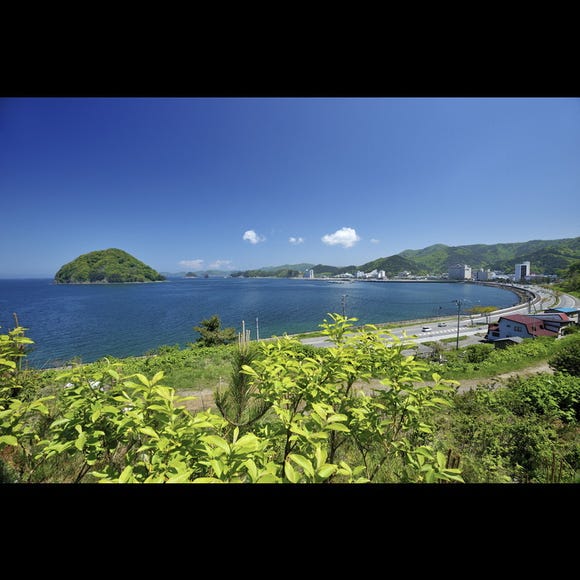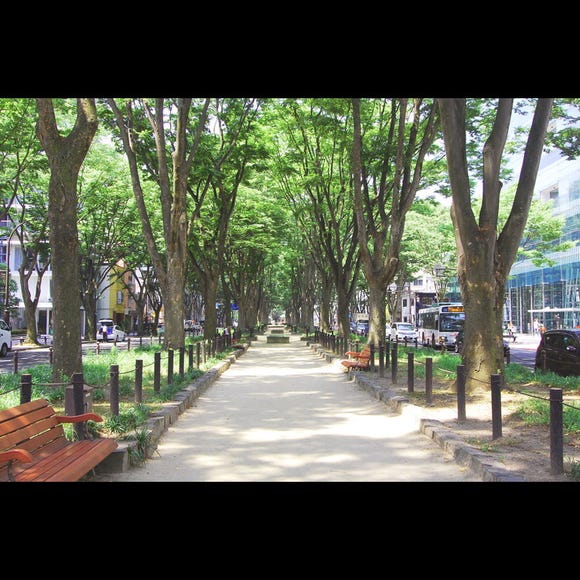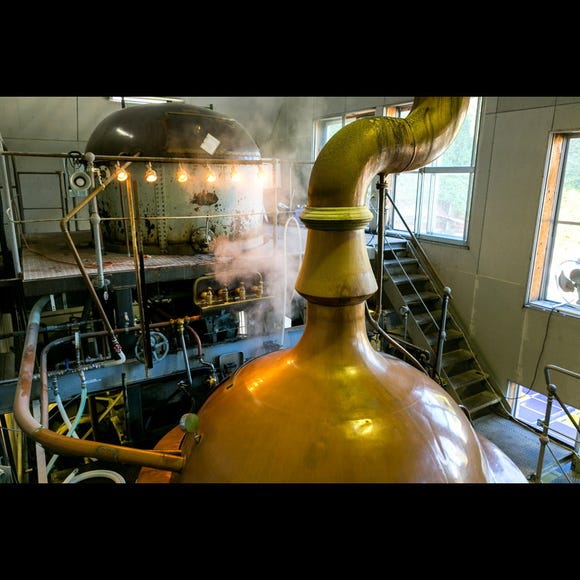
The Japanese town of Inakadate has become famous for its rice field art (called Tanbo Art in Japanese) held from early June to October.
Rice paddy art is the use of a rice paddy as a gigantic canvas by planting different rice varieties of different shares. It's said that rice paddy art originated in the town of Inakadate in Aomori Prefecture.
The designs change every year and have included such themes as Star Wars and Roman Holiday. What is it about Inakadate's rice field art that draws visitors from all over the world?
(Photo provided by: Inakadate Village Planning and Tourism Division)
Exactly what is rice field art in Japan?

Rice paddy art, or Tanbo Art, is the creation of pictures and letters made by planting different color types of rice.
Inakadate Village in Japan, located in the middle of Aomori Prefecture, was the first place to create rice paddy art and currently, there are two locations in the village dedicated for that purpose.
It originally began as a way of promoting the local Tsugaru Otome rice brand. It started in 1993 when the staff at the village office came up with the idea that it would be interesting not only to experience rice cultivation, such as rice planting and rice harvesting but also to create pictures with three types of rice of different colors.
How exactly is rice paddy art formed?

In the beginning, they used three different types of rice having three different colors. Today, however, they use 13 types of rice, having 7 different colors which create a more realistic representation of people, their expressions, their clothes, and other things.
The design changes every year with the art teacher in the village school lending a hand. It is drawn in perspective so that the picture is not distorted when viewed from an observation deck.
Once a design has been decided, the varieties of rice to be planted are selected and a blueprint is made. The positions that will serve as marks for planting the seedlings are determined and then marked by stakes following the completed blueprint.
Once that is done, the planting of the seedlings begins. Once the rice plants have matured the rice paddy art is completed. What is amazing is that all of this work is done manually by the villagers.

Anyone can participate in the harvest of the rice if they make a reservation in advance. The rice planting event is held every year from early to mid-May and the harvesting of it takes place from early to mid-September.
Applications to participate can be made on the Inakadate Village website (English, Korean, and Chinese languages supported). Both are on a first-come, first-served basis, so if you are interested, early application is recommended.
Some of the incredible Inakadate rice field art works created in the past!

The theme in 2015 was Hollywood movies. Two works, the timeless masterpiece Gone with the Wind, which was released in 1939, and Star Wars: the Force Awakens were created in the rice fields at that time. The scene of Rhett Butler holding Scarlett O'Hara, used in the movie poster, was skillfully reproduced.

The themes in 2017 were the Japanese fairy tale Momotaro and The Legend of Yamata no Orochi, the famous Japanese mythological story about an eight-headed and eight-tailed Japanese dragon. The contrast of the fur on the dog and the drawing of Momotaro looks realistic!

The themes for 2018 were Roman Holiday and Tezuka Osamu Characters. The scene of Joe Bradley and Princess Ann riding a Vespa around the city of Rome from the movie Roman Holiday was recreated. The animated expressions of the two are so realistic that they seem three-dimensional.
Where you can see Inakadate Village’s rice paddy art

There are two rice paddy art venues in Inakadate Village. You can see the 1st rice paddy art from the Inakadate Village Observatory (1st venue) and the 2nd rice paddy art from the Yayoi no Sato Observatory (2nd venue).
The first venue, Inakadate Village Observatory, is located inside the Inakadate Village Government Office and the field can be seen from the observation deck on the 4th floor and the castle tower on the 6th floor.
Tickets for the observation deck are sold at the entrance to the observation deck on the first floor, and tickets for the castle tower are sold on the fourth floor (viewing only from the castle tower is not possible).

The second venue, Yayoi no Sato Observatory, is located on the premises of the Inakadate Yayoi no Sato Road Station. Since it has a restaurant and a direct sales office, it is ideal for having a meal and shopping for souvenirs.
In addition, the Tanbo Art Station, which is located on the Konan Railway Konan Line, is about a 30-minute walk from the first venue and open for a limited period from April to November.
What are the themes for 2024?
The 31st annual Rice Field Art in 2024 will feature two stunning designs. The first artwork celebrates the newly redesigned 1,000-yen bill set to debut on July 3, 2024. The second artwork brings to life a popular TV anime set in the Tsugaru region, which premieres on April 7.
First Rice Field: "The Great Wave off Kanagawa and Shibasaburo Kitasato"
This design showcases Katsushika Hokusai's masterpiece The Great Wave off Kanagawa from Thirty-Six Views of Mount Fuji, which was previously featured in the 15th Rice Field Art in 2007. This time, the artwork has been expanded with seven vibrant colors, capturing an even more dynamic and immersive wave scene. Alongside it, a portrait of Shibasaburo Kitasato, the "Father of Modern Japanese Medicine" with ties to Aomori, will be depicted, highlighting his significant contributions.
Second Rice Field: "Elderly Couple Just Regained Youth And Will Fully Enjoy It"
Inspired by the upcoming TV anime Elderly Couple Just Regained Youth And Will Fully Enjoy It, this piece depicts the heartwarming and comedic story of an elderly apple-farming couple who regain their youth after eating a mysterious apple. Set in the Tsugaru region, the characters speak in the local Tsugaru dialect. The original manga's creator, Arido Kagiri, hails from Hirakawa City, making the artwork a perfect collaboration with local areas like Hirakawa and Hirosaki, as well as the Konan Railway.
The best time to see the fields is from mid-July to mid-August when the spaces between the rice stalks disappear as the rice grows. However, in June the rice fields are still a lush green and do not begin to change color until September. Visit Inakadate Village and see the incredible rice paddy art!
Getting to Inakadate
When visiting from the Tokyo metropolitan area, take the Tohoku Shinkansen Hayabusa from Tokyo Station to Shin-Aomori Station. Transfer to the JR Ou Main Line, get off at Hirosaki Station, then transfer to the Konan Railway Konan Line and head to Tanbo Art Station.
From mid-June to early October, when the rice field art is at its best, the free shuttle bus Tasaabei (capacity: 9 people) connecting the two venues runs every 30 minutes. The Yayoi-no-Sato Observatory is about a 5-minute walk from Tanbo Art Station, so it's best to first view the 2nd rice paddy art and then take the bus to the 1st rice paddy art venue.
-
Inakadate Tanbo Art田舎館村田んぼアート
- Address 123-1 Nakatsuji Inakadate, Minamitsugaru District, Aomori 038-1113
Telephone: 0172-58-2111 (Inakadate Village Planning and Tourism Division)
Open: Observation Deck 9:00 a.m. ~ 5:00 p.m. (Admission until 4:30 p.m.), may vary according to season
Admission: free (except for observation decks which have a fee)
Closed: always open
Text by: SHOE PRESs
*Prices and options mentioned are subject to change.
*Unless stated otherwise, all prices include tax.
Popular Tours & Activitiess
Recommended places for you
-

Geibikei Gorge
Rivers, Lakes & Canyons
Morioka, Hiraizumi And Hachimantai
-

Asamushi Onsen
Hot Springs (Onsen) & Bath Houses (Sento)
Aomori, Hirosaki And Hachinohe
-

Jozenji Street
Other Townscapes
Sendai And Matsushima
-

Oirase River
Rivers, Lakes & Canyons
Other Surrounding Areas Of Aomori
-

Baeren Brewery Co., Ltd.
Other Sightseeing
Morioka, Hiraizumi And Hachimantai
-

Matsushima Bay
Landscapes
Sendai And Matsushima
-

Shopping in Niigata: 9 Must-Buy Souvenirs & Local Sake to Take Home
by: ShiroKu inc.
-

Aomori's Quiet Side in Autumn: 5 Scenic Spots in Hachinohe According to a Local
by: Marco Blasco
-

Shopping in Akita: 11 Must-Buy Souvenirs & Where to Shop Near the Station and Airport
by: ShiroKu inc.
-
Ad

Just one stop from Haneda Airport! "Truly Japanese!" Food, Fun, and Knowledge Gather at HICityⓇ Enjoy An Electrifying Night at "Japan Night Fever: Haneda Innovation City"
by: Yohei Kato
-

Dining in Yamagata: Must-Try Foods & Top Restaurants Near the Station
by: ShiroKu inc.
-

Smart Ways to Avoid Crowds and Enjoy a Safe, Comfortable Trip to Myoko, Niigata Prefecture.
-

10 Must-See Tohoku Festivals: Experience Epic 'Matsuri' in Northern Japan and Discover a World of Tradition
by: Guest Contributor
-

Iwate Bucket List: 20 Best Things to Do in Iwate Prefecture For Tourists (Attractions, Food, Activities)
-

Akita Kanto Festival 2025: Thrilling Acrobats, Illuminated by 10,000 Lanterns - One of Northeastern Japan's Biggest Festivals
-

Aomori Nebuta Festival (2025): Light Up Your Summer With Japan's Epic Fiery Floats (Guide + Tickets)
by: Guest Contributor
-

Feel the Spirit of Northern Japan at the Tohoku Kizuna Festival
by: Alexander Litz
-

Togatta Onsen Guide: Best 6 Places to Indulge Yourself in Miyagi Prefecture's Magical Hot Springs Resort Village













